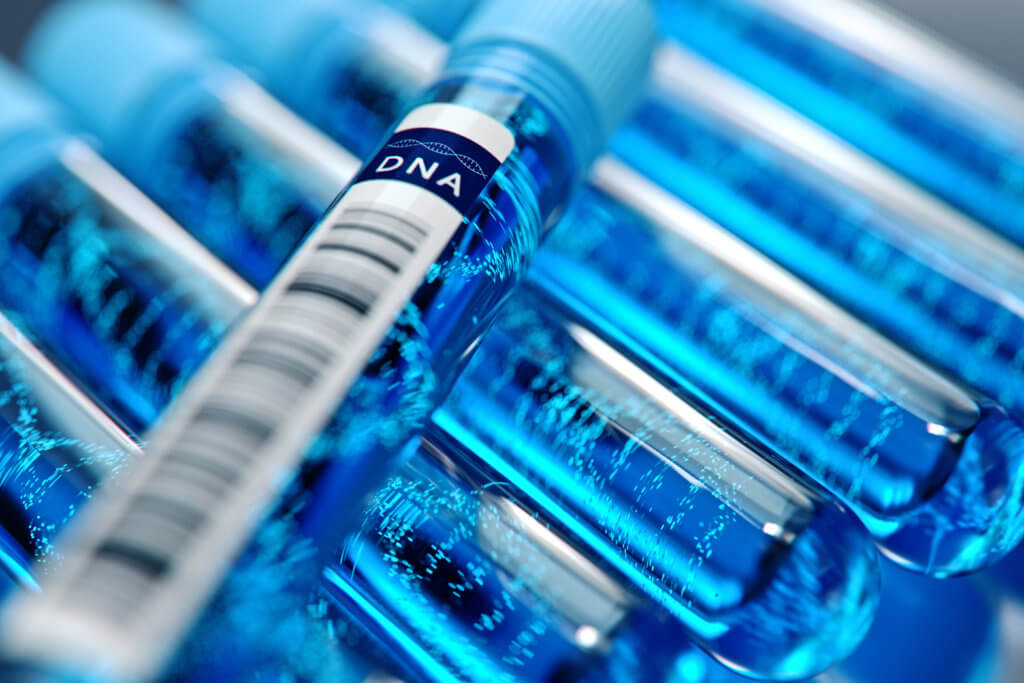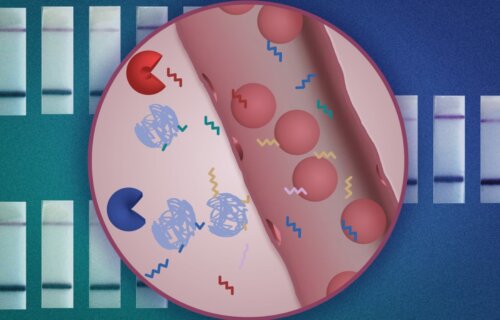CAMBRIDGE, Mass. — Many patients with cancer would likely have better outcomes if they or their doctor caught the disease earlier. With that in mind, MIT engineers have designed a new nanoparticle sensor that could make this possible. Even better, researchers say the test uses a simple piece of paper and a urine sample.
When the nanoparticles encounter a tumor, they start shedding short DNA sequences excreted in urine. By analyzing DNA “barcodes,” scientists can reveal unique information about a patient’s tumor. The test is affordable and easy to complete, making use of a strip of paper, just like an at-home COVID test.
“We are trying to innovate in a context of making technology available to low- and middle-resource settings. Putting this diagnostic on paper is part of our goal of democratizing diagnostics and creating inexpensive technologies that can give you a fast answer at the point of care,” says Sangeeta Bhatia, the John and Dorothy Wilson Professor of Health Sciences and Technology and of Electrical Engineering and Computer Science at MIT and a member of MIT’s Koch Institute for Integrative Cancer Research and Institute for Medical Engineering and Science, in a media release.
Bhatia has previously created nanoparticles that can detect the activity of enzymes called proteases, which help cancer cells to move throughout the body, by making them detectable in urine. The problem with this process is that it uses mass spectrometry for analysis, which requires expensive equipment that isn’t accessible to everyone. So, Bhatia and the team looked into using CRISPR technology instead.

Once the sensors are secreted in a patient’s urine, the sample can be analyzed using a paper strip that recognizes a DNA barcode that has been activated by a CRISPR enzyme called Cas12a. When a specific barcode is present in the sample, Cas12a helps to make it visible on a dark strip.
In experiments with mice, the sensors were able to detect the activity of five different enzymes expressed in tumors. Further, the team demonstrated that they could scale the test up to distinguish at least 46 different DNA barcodes within a single sample by using a microfluidic device for analysis. They also found that five DNA barcodes could accurately tell the difference between tumors that started in the lungs and tumors that formed from colorectal cancer that then traveled to the lungs.
“Our goal here is to build up disease signatures and to see whether we can use these barcoded panels not only read out a disease but also to classify a disease or distinguish different cancer types,” says lead author Liangliang Hao, an assistant professor of biomedical engineering at Boston University.
Study authors add that the test can not only detect cancer, but it can also measure how well a patient’s tumor responds to treatment and if a tumor has come back. The team is now looking ahead to developing the particles even further in order to be able to test on humans.
The findings are published in the journal Nature Nanotechnology.
You might also be interested in:
- New multi-cancer test can detect disease at early stages with small amounts of blood, urine
- Blood test that screens for multiple cancers at once promises to boost early detection
- New blood test can detect over 50 types of cancer


Hi I’m interested in article where I can make appointment for test.my psa number are so high.last 3 years started increase.thanks